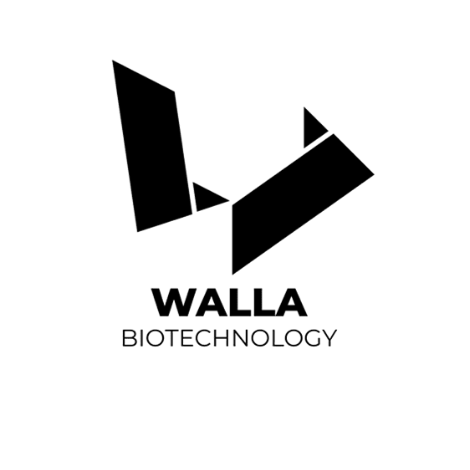Understanding MOSI2 Technology: The Science Behind Superior Heating Elements
When it comes to high-temperature applications in dental laboratories and industrial settings, not all heating elements are created equal. Molybdenum disilicide (MoSi₂) technology represents a quantum leap forward in heating element performance, offering capabilities that traditional materials simply cannot match.
What is Molybdenum Disilicide (MoSi₂)?
Molybdenum disilicide is an intermetallic compound that combines molybdenum and silicon in a specific crystalline structure. This unique composition creates a material with extraordinary properties that make it ideal for extreme high-temperature applications.
Unlike conventional heating elements made from kanthal or nichrome wires, MoSi₂ elements operate reliably at temperatures up to 1800°C (3272°F) in air atmosphere - nearly twice the temperature capability of traditional materials.
The Revolutionary Self-Healing Property
How the Protective Glaze Forms
The most remarkable feature of MoSi₂ technology is its self-healing capability. At temperatures above 1200°C, the material undergoes a fascinating transformation:
- Silicon Migration: Silicon atoms migrate to the element's surface
- Oxidation Reaction: These atoms react with atmospheric oxygen
- Glaze Formation: A dense silicon dioxide (SiO₂) protective layer forms
- Self-Sealing: This glaze creates a hermetic barrier against further oxidation
This protective glaze is not just a coating - it's an integral part of the element's structure that continuously regenerates itself during operation.
Why This Matters for Your Operations
Traditional heating elements degrade through oxidation, requiring frequent replacement. MoSi₂ elements actually become more protected with use, leading to:
- 300-500% longer service life compared to conventional elements
- Consistent performance through thousands of thermal cycles
- Reduced maintenance costs and operational downtime
- Improved process reliability for critical applications
Temperature Performance Across Different Atmospheres
MoSi₂ elements demonstrate exceptional versatility across various atmospheric conditions:
Air Atmosphere (1800°C Maximum)
Perfect for standard dental zirconia sintering and most industrial applications. The oxygen in air actually contributes to the protective glaze formation.
Inert Atmospheres (1750°C Maximum)
In helium, argon, or neon environments, elements maintain excellent performance while the protective glaze provides oxidation resistance.
Controlled Atmospheres (1400-1700°C)
Specialized applications using SO₂, CO, or nitrogen atmospheres benefit from the element's chemical stability and controlled reactivity.
Material Science: The Technical Advantage
Crystal Structure and Phase Transitions
MoSi₂ has a unique tetragonal crystal structure that provides:
- High melting point (2030°C)
- Excellent thermal conductivity
- Low coefficient of thermal expansion
- Superior thermal shock resistance
At approximately 1200°C, the material transitions from a brittle to a ductile state, which is crucial for handling thermal stress and preventing crack propagation.
Mechanical Properties That Matter
Density (5.8 g/cm³): High-density construction ensures optimal heat transfer and uniform temperature distribution.
Bending Strength (650 MPa): Superior mechanical integrity maintains element shape under thermal stress and physical loading.
Fracture Toughness (4.5 MPa.m^1/2): Excellent resistance to crack initiation and propagation, crucial for long-term reliability.
Low Porosity (0.6%): Minimal porosity prevents contamination ingress and ensures consistent heating characteristics.
Applications Where MOSI2 Technology Excels
Dental Zirconia Sintering
MoSi₂ elements are specifically advantageous for dental applications because:
- Ultra-high purity prevents contamination of zirconia materials
- Uniform heating ensures consistent shrinkage and properties
- No discoloration of final dental restorations
- Rapid thermal response supports fast sintering cycles
Industrial High-Temperature Processing
Beyond dental applications, MoSi₂ technology enables:
- Advanced ceramics manufacturing
- Metal heat treatment and annealing
- Research and development applications
- Specialized materials processing
Electrical Characteristics and Control
Temperature-Dependent Resistance
One of MOSI2's unique features is its positive temperature coefficient of resistance. This means:
- Low resistance at startup for safe, controlled heating initiation
- Increasing resistance with temperature provides natural current limiting
- Self-regulating behavior contributes to stable operation
- Predictable performance enables precise temperature control
Power Density and Efficiency
MoSi₂ elements offer exceptional power density, meaning:
- Compact designs for space-constrained applications
- High efficiency reduces energy consumption
- Fast heating rates improve process throughput
- Precise control enables tight temperature tolerances
Environmental and Safety Advantages
Clean Operation
MoSi₂ elements produce:
- No toxic fumes during normal operation
- Minimal off-gassing at operating temperatures
- Clean heating without contamination risk
- Environmentally friendly operation and disposal
Safety Features
The technology inherently provides:
- Predictable failure modes without catastrophic breakage
- Visual wear indicators through glaze condition
- Stable electrical characteristics reducing shock hazards
- No toxic materials in construction or operation
The Future of High-Temperature Heating
As industries demand higher temperatures, better efficiency, and improved reliability, MoSi₂ technology represents the evolution of heating element design. Its unique combination of:
- Extreme temperature capability
- Self-healing properties
- Long service life
- Environmental compatibility
Makes it the clear choice for next-generation applications.
Making the Transition to MOSI2
For facilities currently using traditional heating elements, transitioning to MoSi₂ technology offers:
Immediate Benefits
- Higher operational temperatures
- Improved process consistency
- Reduced maintenance requirements
Long-term Advantages
- Lower total cost of ownership
- Enhanced process capabilities
- Future-proofed technology investment
Implementation Considerations
- Compatible with most existing furnace designs
- Straightforward installation procedures
- Comprehensive technical support available
Conclusion: The Science Speaks for Itself
Molybdenum disilicide technology isn't just an incremental improvement - it's a fundamental advancement in heating element design. The combination of extreme temperature capability, self-healing properties, and long-term reliability makes MoSi₂ elements the logical choice for demanding applications.
Whether you're processing dental zirconia, manufacturing advanced ceramics, or conducting high-temperature research, understanding MoSi₂ technology is essential for optimizing your operations and staying competitive in today's demanding market.
Ready to explore how MOSI2 technology can transform your high-temperature applications? Contact our technical team for application-specific guidance and product recommendations tailored to your exact requirements.
Related Articles:
- WL1800 MOSI2 Elements: Complete Technical Specifications
- Installation Best Practices for MOSI2 Heating Elements
- Dental Furnace Compatibility Guide: Finding the Perfect Match
- Troubleshooting MOSI2 Elements: Common Issues and Solutions




